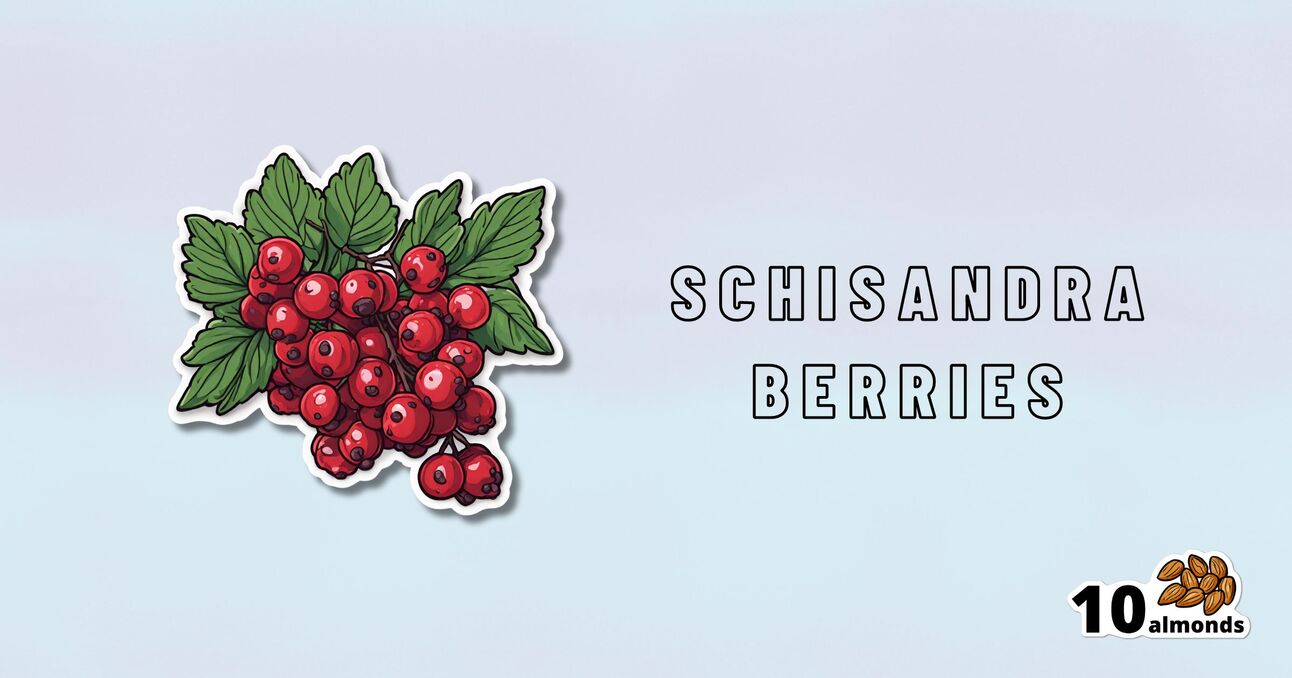Five Flavors & Five Benefits
Dive into the multifaceted benefits of Schisandra chinensis, from easing menopausal symptoms to enhancing liver health and athletic performance. Is this superberry your next health ally?

Five Flavors Of Good Health
Schisandra chinensis, henceforth Schisandra, is also called the “five flavor fruit”, for covering the culinary bases of sweet, salt, bitter, sour, and pungent.
It can be eaten as a fruit (small red berries), juiced from the fruit, or otherwise extracted into supplements (dried powder of the fruit being a common one).
It has long enjoyed usage in various traditional medicines, especially in China and Siberia.
So, what are its health claims, and how does the science stack up?
Menopause
Most of the studies are mouse studies, and we prefer studies on humans, so here’s a small (n=36) randomized clinical trial that concluded…
❝Schisandra chinensis can be a safe and effective complementary medicine for menopausal symptoms, especially for hot flushes, sweating, and heart palpitations❞
~ Dr. Joon Young Park & Dr. Kye Hyun Kim
Read more: A randomized, double-blind, placebo-controlled trial of Schisandra chinensis for menopausal symptoms
Antioxidant (and perhaps more)
Like many berries, it’s a good source of lignans offering antioxidant effects:
Antioxidant Effects of Schisandra chinensis Fruits and Their Active Constituents
Lignans usually have anticancer effects too (which is reasonably, given what is antioxidant is usually anticancer and anti-inflammatory as well, by the same mechanism) but those have not yet been studied in schisandra specifically.
Antihepatotoxicity
In other words, it’s good for your liver. At least, so animal studies tell us, because human studies haven’t been done yet for this one. The effect is largely due to its antioxidant properties, but it seems especially effective for the liver—which is not surprising, giving the liver’s regeneration mechanism.
Anyway, here’s a fascinating study that didn’t even need to use the fruit itself, just the pollen from the plant, it was that potent:
Athletics enhancer
While it’s not yet filling the shelves of sports nutrition stores, we found a small (n=45) study with healthy post-menopausal women who took either 1g of schisandra (experimental group) or 1g of starch (placebo group), measured quadriceps muscle strength and resting lactate levels over the course of a 12 week intervention period, and found:
❝Supplementation of Schisandra chinensis extract can help to improve quadriceps muscle strength as well as decrease lactate level at rest in adult women ❞
Anti-Alzheimers & Anti-Parkinsons
The studies for this are all in vitro, but that’s because it’s hard to find volunteers willing to have their brains sliced and looked at under a microscope while they’re still alive.
Nevertheless, the results are compelling, and it seems uncontroversial to say that schisandra, or specifically Schisandrin B, a compound it contains, has not only anti-inflammatory properties, but also neuroprotective properties, and specifically blocks the formation of excess amyloid-β peptides in the brain (which are critical for the formation of amyloid plaque, as found in the brains of Alzheimer’s patients):
Is it safe?
For most people, yes! Some caveats:
- As it can stimulate the uterus, it’s not recommended if you’re pregant.
- Taking more than the recommended amount can worsen symptoms of heartburn, GERD, ulcers, or other illnesses like that.
And as ever, do speak with our own doctor/pharmacist if unsure, as your circumstances may vary and we cannot cover all possibilities here.
Where can I get some?
We don’t sell it, but here for your convenience is an example product on Amazon 😎
Enjoy!
Share This Post
Learn To Grow
Sign up for weekly gardening tips, product reviews and discounts.




